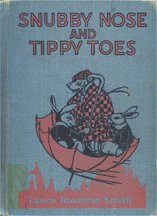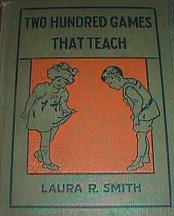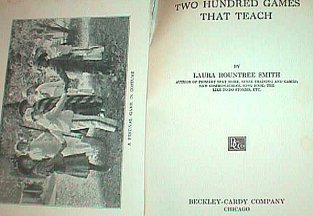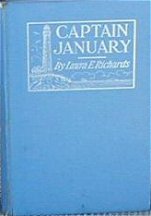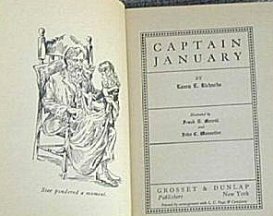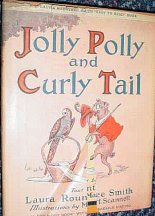Can These Things Be
You Can't Print That! The Truth Behind The News, 1918-1928. A Star
Book by George Seldes. 1929 ~Garden City NY. The War; Italy;
Russia; Arabia; The Truth About Mexico; and The Rest of Europe. 465
pages. From the Introduction: "In his search for facts the
newspaperman on foreign service contends with more censorship, propaganda,
intimidation and frequently terrorism in Continental Europe nowadays than
in that supposedly dark journalistic age which preceded the world war..."
Chapters include: "The Truth about the War at Sea", "The Truth about
Fascist Terrorism and Censorship", "The Pope and Fascism", "The Terror
in Russia Continues", "The Truth about France and the Eastern War", "Then
Up Spoke the King of Iraq", "American Reporters and Mexico", etc.
 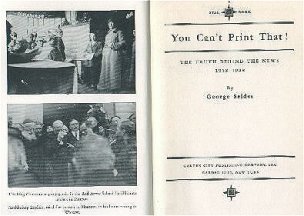 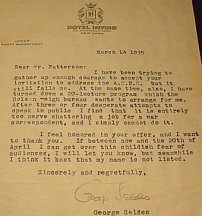
OTHER:
Great Quotations
The Great Thoughts
Tell the Truth and Run: George Seldes and the American Press: Academy-Award
nominated film by Rick Goldsmith
If you have a high speed connection, you can watch this remarkable
film online. Still images from the film also available.
Click here to view: http://com.castleton.edu/seldes
Online eText Editions
Lords
of the Press
Witness
to a Century - George Seldes' autobiography
San Francisco's press
and the 1934 General Strike - from "Freedom of the Press"
War propaganda
during World War One - from "Freedom of the Press" |
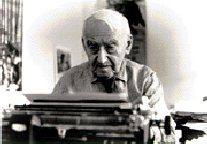 George
Seldes was born in Alliance, New Jersey, on 16th November, 1890. When
he was nineteen he was employed as a cub reporter by the Pittsburgh Leader.
In 1914 he was appointed night editor of the Pittsburgh Post. As a young
man he was influenced by the investigative journalism of Lincoln Steffens.
In 1916 Seldes moved to London where he worked for the United Press. When
the United States joined the First World War in 1917, Seldes was sent to
France where he worked as the war correspondent for the Marshall Syndicate.
At end of the war he managed to obtain an exclusive interview with Paul
von Hindenburg. Unfortunately for Seldes, the article was suppressed and
never appeared in the American press. Seldes spent the next ten years as
an international reporter for the Chicago Tribune. This included an interview
with Lenin in 1922. However, the Soviet government did not like Seldes's
reports and in 1923 he was expelled from the country. The editor of the
Chicago Tribune sent him to Italy where he wrote about Benito Mussolini
and the rise of fascism. Seldes investigated the murder of Giacomo Matteotti,
the head of the Italian Socialist Party. His article implicating Mussolini
in the killing, resulted in Seldes being expelled from Italy. The Chicago
Tribune sent Seldes to Mexico in 1927 but his articles criticizing American
corporations concerning their use of the country's mineral rights, were
not always published by the newspaper. Seldes returned to Europe but found
that increasingly his work was being censored to fit the political views
of the newspaper's owner, Robert McCormack. Disillusioned, Seldes left
the Chicago Tribune and worked as a freelance writer. In his first two
books, You Can't Print That! (1929) and Can These Thins Be! (1931), Seldes
included material that he had not been allowed to publish in the Chicago
Tribune. His next book, World Panorama (1933), was a narrative history
of the period that followed the First World War. In 1934 Seldes published
a history of the Catholic Church, The Vatican. This was followed by an
expose of the world armaments industry, Iron, Blood and Profits (1934),
an account of Benito Mussolini, Sawdust Caesar (1935), and two books on
the newspaper industry, Freedom of the Press (1935) and Lords of the Press
(1938). During this period he also reported on the Spanish Civil War for
the New York Post. On his return to the United States in 1940 Seldes published
Witch Hunt, an account of the persecution of people with left-wing political
views in America, and The Catholic Crisis, where he attempted to show the
close relationship between the Catholic Church and fascist organizations
in Europe. In 1940 Seldes began his own political newsletter called In
Fact. A journal that eventually reached a circulation of 176,000. One of
the first articles published in the newsletter concerned the link between
cigarette smoking and cancer. Seldes later explained that at the time,
"The tobacco stories were suppressed by every major newspaper. For ten
years we pounded on tobacco as being one of the only legal poisons you
could buy in America." As well as writing his newsletter Seldes continued
to publish books. This included Facts and Fascism (1943), 1000 Americans
(1947), an account of the people who controlled America and The People
Don't Know (1949) on the origins of the Cold War. In the early 1950s Seldes
work came under attack from Joseph McCarthy. Despite his long history of
being hostile to all forms of authoritarianism and totalitarianism, he
was accused of being a communist. He later recalled how: "Newspaper columnists
would write that a Russian agent stopped by my office each week to pay
my salary. I didn't have the money to sue them for libel. My lawyer told
me it would take years to reach a settlement and even if I won I would
never see a dime." George
Seldes was born in Alliance, New Jersey, on 16th November, 1890. When
he was nineteen he was employed as a cub reporter by the Pittsburgh Leader.
In 1914 he was appointed night editor of the Pittsburgh Post. As a young
man he was influenced by the investigative journalism of Lincoln Steffens.
In 1916 Seldes moved to London where he worked for the United Press. When
the United States joined the First World War in 1917, Seldes was sent to
France where he worked as the war correspondent for the Marshall Syndicate.
At end of the war he managed to obtain an exclusive interview with Paul
von Hindenburg. Unfortunately for Seldes, the article was suppressed and
never appeared in the American press. Seldes spent the next ten years as
an international reporter for the Chicago Tribune. This included an interview
with Lenin in 1922. However, the Soviet government did not like Seldes's
reports and in 1923 he was expelled from the country. The editor of the
Chicago Tribune sent him to Italy where he wrote about Benito Mussolini
and the rise of fascism. Seldes investigated the murder of Giacomo Matteotti,
the head of the Italian Socialist Party. His article implicating Mussolini
in the killing, resulted in Seldes being expelled from Italy. The Chicago
Tribune sent Seldes to Mexico in 1927 but his articles criticizing American
corporations concerning their use of the country's mineral rights, were
not always published by the newspaper. Seldes returned to Europe but found
that increasingly his work was being censored to fit the political views
of the newspaper's owner, Robert McCormack. Disillusioned, Seldes left
the Chicago Tribune and worked as a freelance writer. In his first two
books, You Can't Print That! (1929) and Can These Thins Be! (1931), Seldes
included material that he had not been allowed to publish in the Chicago
Tribune. His next book, World Panorama (1933), was a narrative history
of the period that followed the First World War. In 1934 Seldes published
a history of the Catholic Church, The Vatican. This was followed by an
expose of the world armaments industry, Iron, Blood and Profits (1934),
an account of Benito Mussolini, Sawdust Caesar (1935), and two books on
the newspaper industry, Freedom of the Press (1935) and Lords of the Press
(1938). During this period he also reported on the Spanish Civil War for
the New York Post. On his return to the United States in 1940 Seldes published
Witch Hunt, an account of the persecution of people with left-wing political
views in America, and The Catholic Crisis, where he attempted to show the
close relationship between the Catholic Church and fascist organizations
in Europe. In 1940 Seldes began his own political newsletter called In
Fact. A journal that eventually reached a circulation of 176,000. One of
the first articles published in the newsletter concerned the link between
cigarette smoking and cancer. Seldes later explained that at the time,
"The tobacco stories were suppressed by every major newspaper. For ten
years we pounded on tobacco as being one of the only legal poisons you
could buy in America." As well as writing his newsletter Seldes continued
to publish books. This included Facts and Fascism (1943), 1000 Americans
(1947), an account of the people who controlled America and The People
Don't Know (1949) on the origins of the Cold War. In the early 1950s Seldes
work came under attack from Joseph McCarthy. Despite his long history of
being hostile to all forms of authoritarianism and totalitarianism, he
was accused of being a communist. He later recalled how: "Newspaper columnists
would write that a Russian agent stopped by my office each week to pay
my salary. I didn't have the money to sue them for libel. My lawyer told
me it would take years to reach a settlement and even if I won I would
never see a dime."
Seles was blacklisted and
now found it difficult to get his journalism published. He continued to
write books including Tell the Truth and Run (1953), Never Tire of Protesting
(1968), Even the Gods Can't Change History (1976) and Witness to a Century
(1987). George Seldes died on 2nd July, 1995, aged 104.
George Seldes (1890-1995)
Nominated for an Academy Award for Best Documentary, Tell the Truth and
Run, the dramatic story of muckraking journalist George Seldes (1890-1995),
is a piercing examination of American journalism. Eighty years a newspaperman,
Seldes was a noted foreign correspondent who became America's most important
press critic. Through Seldes's encounters with Pershing, Lenin and Mussolini;
the tobacco industry, J. Edgar Hoover and the "lords of the press," Tell
the Truth and Run provides a fresh perspective on Twentieth-Century history
while raising profound ethical, professional and political questions about
journalism in America. Seldes at age 98 is the centerpiece of the film:
remarkably engaging,witty and still impassioned about his ideas and ideals.
Ralph Nader,Victor Navasky, Ben Bagdikian, Daniel Ellsberg, Nat Hentoff
and Jeff Cohen, among others, provide incisive commentary. Stunning archival
footage and over 500 headlines, photographs and articles provide a rich
historical backdrop. Tell the Truth and Run raises fundamental questions
about the recorded history of the Twentieth Century; about freedom, fairness
and diversity in the media; about power and abuse of power; and about public
citizenship and the democratic process. |





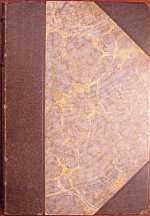
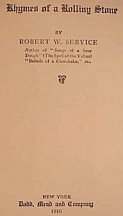
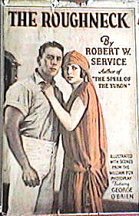
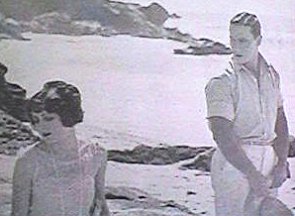
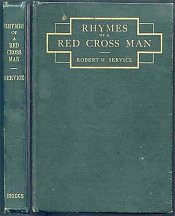
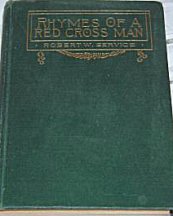
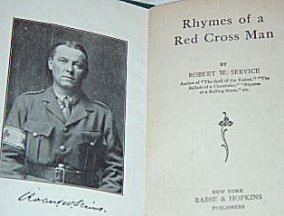
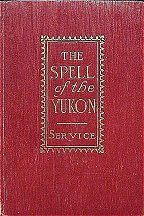
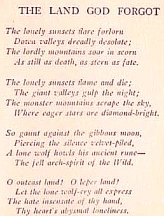
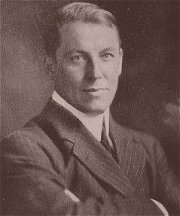
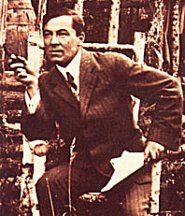 Robert
William Service (January 16, 1874 - September 11, 1958 ) was born in
Preston, Lancashire, England to a Scottish bank clerk and the daughter
of an English factory owner. At the age of 15 he followed his father into
the banking business, but in 1896 he emigrated to Canada where he joined
his younger brother in an experiment in ranching. The life of a farmer
in British Columbia, however, was far from his expectations and after 18
months he set off for California. For the next 6 years Service drifted
up and down the Pacific coast. In 1903, finding himself broke in Vancouver,
he applied to and was hired by the Canadian Bank of Commerce and won a
posting in Whitehorse in the Yukon Territory. Here Service found the western
life he had sought, with its balance of a frontier sort of social life
and the solitude of the northern woods. During his wanderings Service had
spent much time reading and dreaming and one day he was invited to recite
at a church concert. A friend of his suggested that Service write something
about the Yukon. He was inspired, as he tells it, by his surroundings.
"It was Saturday night, and from the various bars I heard sounds of revelry.
The line popped into my mind: 'A bunch of boys were whooping it up' and
it stuck there. Good enough for a start.". Desiring a quiet place to work
he went to his bank where the startled bank guard fired a shot at him the
event which led Service's mind toward the idea of a shooting and, "The
Shooting of Dan McGrew" was born. The flood gates opened, Service wrote
so many poems over the next few months that he decided to publish them
and found a publisher who would pay a 10% royalty, and Songs of a Sourdough
(reissued as The Spell of the Yukon) was published to some success. In
1908 he was transformed 400 miles north to Dawson where he composed and
published Ballads of a Cheechako and, the following year, resigned from
the bank in order to write full time. Setting up shop in a log cabin Service
decided to write a novel about the Gold Rush. In preparation he travelled
along the Klondike River visiting the famous gold sites and boom towns;
interviewing those who had settled in the area during 1898 and read everything
he could find on the subject. Having finished the novel he moved to New
York City where the book was published as The Trail of 98. Having seen
the book to publication service travelled to Louisiana, then Cuba and back
to Alberta from whence he returned to the Yukon by paddling a canoe down
the Mackensie River. Back in his cabin Service took up where he had left
off, enjoying a bohemian sort of life and writing a great amount of poetry.
In 1912, having finished Rhymes of a Rolling Stone he accepted the job
of war correspondent in the Balkan war. During his travels in Europe Service
married a woman from paris and purchased a villa in Brittany. In the First
World War he served in an America volunteer ambulance unit and became a
war correspondent for the Canadian government. Following the war he travelled
and wrote two volumes of poetry and several novels. With the outbreak of
the Second World War he escaped from Poland to Hollywood where he lived
in exile until the end of the war and his return to France Though
he never returned to the Yukon after he left in 1912 it remained a part
of his life until his death in 1958 in Lancieux, France.
Robert
William Service (January 16, 1874 - September 11, 1958 ) was born in
Preston, Lancashire, England to a Scottish bank clerk and the daughter
of an English factory owner. At the age of 15 he followed his father into
the banking business, but in 1896 he emigrated to Canada where he joined
his younger brother in an experiment in ranching. The life of a farmer
in British Columbia, however, was far from his expectations and after 18
months he set off for California. For the next 6 years Service drifted
up and down the Pacific coast. In 1903, finding himself broke in Vancouver,
he applied to and was hired by the Canadian Bank of Commerce and won a
posting in Whitehorse in the Yukon Territory. Here Service found the western
life he had sought, with its balance of a frontier sort of social life
and the solitude of the northern woods. During his wanderings Service had
spent much time reading and dreaming and one day he was invited to recite
at a church concert. A friend of his suggested that Service write something
about the Yukon. He was inspired, as he tells it, by his surroundings.
"It was Saturday night, and from the various bars I heard sounds of revelry.
The line popped into my mind: 'A bunch of boys were whooping it up' and
it stuck there. Good enough for a start.". Desiring a quiet place to work
he went to his bank where the startled bank guard fired a shot at him the
event which led Service's mind toward the idea of a shooting and, "The
Shooting of Dan McGrew" was born. The flood gates opened, Service wrote
so many poems over the next few months that he decided to publish them
and found a publisher who would pay a 10% royalty, and Songs of a Sourdough
(reissued as The Spell of the Yukon) was published to some success. In
1908 he was transformed 400 miles north to Dawson where he composed and
published Ballads of a Cheechako and, the following year, resigned from
the bank in order to write full time. Setting up shop in a log cabin Service
decided to write a novel about the Gold Rush. In preparation he travelled
along the Klondike River visiting the famous gold sites and boom towns;
interviewing those who had settled in the area during 1898 and read everything
he could find on the subject. Having finished the novel he moved to New
York City where the book was published as The Trail of 98. Having seen
the book to publication service travelled to Louisiana, then Cuba and back
to Alberta from whence he returned to the Yukon by paddling a canoe down
the Mackensie River. Back in his cabin Service took up where he had left
off, enjoying a bohemian sort of life and writing a great amount of poetry.
In 1912, having finished Rhymes of a Rolling Stone he accepted the job
of war correspondent in the Balkan war. During his travels in Europe Service
married a woman from paris and purchased a villa in Brittany. In the First
World War he served in an America volunteer ambulance unit and became a
war correspondent for the Canadian government. Following the war he travelled
and wrote two volumes of poetry and several novels. With the outbreak of
the Second World War he escaped from Poland to Hollywood where he lived
in exile until the end of the war and his return to France Though
he never returned to the Yukon after he left in 1912 it remained a part
of his life until his death in 1958 in Lancieux, France.
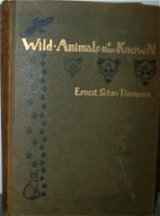
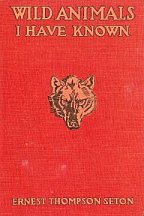
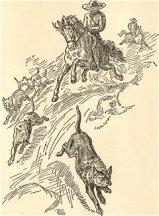
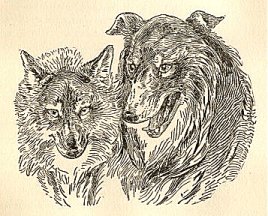
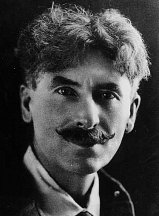 Seton
was
a descendant of the Scottish Setons who fought for the Stuarts in 1745
and then fled to England under the name of Thompson. Ernest Thompson Seton
(he assumed his family’s historical identity in his twenties) was born
in southern England in August 1860, the ninth son in a family of ten boys.
When he was six years old, Seton’s family emigrated to Canada, and for
several years they resided on a farm near Lindsay, Ontario, where Seton
began his lifelong study of birds – often catching and dissecting wildlife
to assure that his drawings were realistic. Falling onto hard times, the
family moved to Toronto in 1870, but Seton found rural sustenance in the
wilds of the Don Valley, the Toronto Marsh, and Queen’s Park, all of which,
at that time, teemed with wildlife. His forays into the wilderness did
not, however, interfere with his studies: his brilliance as a pupil was
soon recognized, and he continued his schooling at Jarvis Street Collegiate.
Later, he was apprenticed to a Toronto portrait artist and then studied
at the Ontario College of Art where he took the Gold Medal in 1879. For
a while he lived with his brother on their farm in Carberry, Manitoba,
(20 miles from the Hillman home) and his experience there intensified an
interest in animal life, particularly in coyotes, bears, and wolves. He
is best known for his extraordinary animal stories, popularized originally
in magazines before being reintroduced in book form as Wild Animals I Have
Known (1898). he was, in 1910, co-founder of the Boy Scouts of America.
Seton
was
a descendant of the Scottish Setons who fought for the Stuarts in 1745
and then fled to England under the name of Thompson. Ernest Thompson Seton
(he assumed his family’s historical identity in his twenties) was born
in southern England in August 1860, the ninth son in a family of ten boys.
When he was six years old, Seton’s family emigrated to Canada, and for
several years they resided on a farm near Lindsay, Ontario, where Seton
began his lifelong study of birds – often catching and dissecting wildlife
to assure that his drawings were realistic. Falling onto hard times, the
family moved to Toronto in 1870, but Seton found rural sustenance in the
wilds of the Don Valley, the Toronto Marsh, and Queen’s Park, all of which,
at that time, teemed with wildlife. His forays into the wilderness did
not, however, interfere with his studies: his brilliance as a pupil was
soon recognized, and he continued his schooling at Jarvis Street Collegiate.
Later, he was apprenticed to a Toronto portrait artist and then studied
at the Ontario College of Art where he took the Gold Medal in 1879. For
a while he lived with his brother on their farm in Carberry, Manitoba,
(20 miles from the Hillman home) and his experience there intensified an
interest in animal life, particularly in coyotes, bears, and wolves. He
is best known for his extraordinary animal stories, popularized originally
in magazines before being reintroduced in book form as Wild Animals I Have
Known (1898). he was, in 1910, co-founder of the Boy Scouts of America.
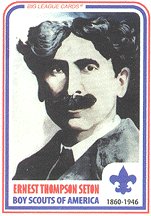
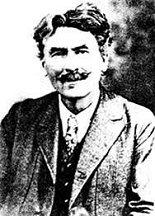
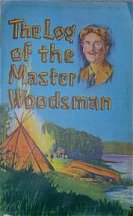
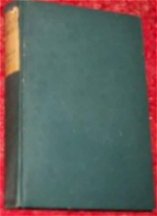
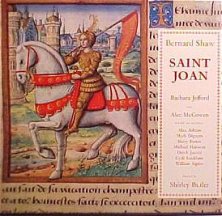
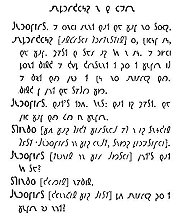
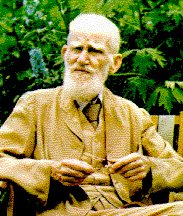 Bernard Shaw, born in Dublin in 1856, was essentially shy, yet created
the persona of G.B.S., the showman, controversialist, satirist, critic,
pundit, wit, intellectual buffoon and dramatist. Commentators brought a
new adjective into the English language: Shavian, a term used to embody
all his brilliant qualities. After his arrival in London in 1876 he became
an active Socialist and a brilliant platform speaker. He wrote on many
social aspects of the day. He undertook his own education at the British
Museum and consequently became keenly interested in cultural subjects.
Thus his prolific output included music, art and theatre reviews which
were collected into several volumes: He wrote five novels and some shorter
fiction. He conducted a strong attack on the London theatre and was closely
associated with the intellectual revival of British theatre. Shaw was awarded
the 1930 Nobel Prize in Literature "for his work which is marked by both
idealism and humanity, its stimulating satire often being infused with
a singular poetic beauty." G.B.S. died in 1950.
Bernard Shaw, born in Dublin in 1856, was essentially shy, yet created
the persona of G.B.S., the showman, controversialist, satirist, critic,
pundit, wit, intellectual buffoon and dramatist. Commentators brought a
new adjective into the English language: Shavian, a term used to embody
all his brilliant qualities. After his arrival in London in 1876 he became
an active Socialist and a brilliant platform speaker. He wrote on many
social aspects of the day. He undertook his own education at the British
Museum and consequently became keenly interested in cultural subjects.
Thus his prolific output included music, art and theatre reviews which
were collected into several volumes: He wrote five novels and some shorter
fiction. He conducted a strong attack on the London theatre and was closely
associated with the intellectual revival of British theatre. Shaw was awarded
the 1930 Nobel Prize in Literature "for his work which is marked by both
idealism and humanity, its stimulating satire often being infused with
a singular poetic beauty." G.B.S. died in 1950.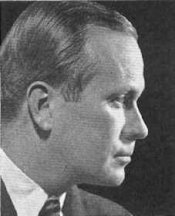 Vincent
Sheean (1899–1975). With his book Personal History, a combination of
autobiography and political commentary, U.S. foreign correspondent and
writer Vincent Sheean helped create the genre of book journalism. He also
published several biographies. The son of Irish American parents, James
Vincent Sheean was born on Dec. 5, 1899, in Pana, Ill. He attended the
University of Chicago Intrigued by the visible madness spilling over
German-occupied territories like the Sudetenland in September 1938, Chicago
native Vincent Sheean watched with disdain as a German minority living
in Czechoslovakia turned ultra-patriotic and heavy-handed in the face of
approaching Wehrmacht troops. As an U.S. American, Sheean only barely escaped
the contempt his fellow French and British journalists—and his British-born
wife—earned from the people of Prague due to France and Britain’s betrayal
of their country in 1938.
Vincent
Sheean (1899–1975). With his book Personal History, a combination of
autobiography and political commentary, U.S. foreign correspondent and
writer Vincent Sheean helped create the genre of book journalism. He also
published several biographies. The son of Irish American parents, James
Vincent Sheean was born on Dec. 5, 1899, in Pana, Ill. He attended the
University of Chicago Intrigued by the visible madness spilling over
German-occupied territories like the Sudetenland in September 1938, Chicago
native Vincent Sheean watched with disdain as a German minority living
in Czechoslovakia turned ultra-patriotic and heavy-handed in the face of
approaching Wehrmacht troops. As an U.S. American, Sheean only barely escaped
the contempt his fellow French and British journalists—and his British-born
wife—earned from the people of Prague due to France and Britain’s betrayal
of their country in 1938.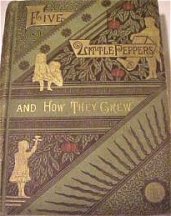
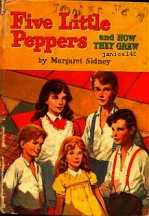
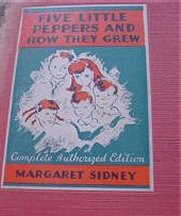
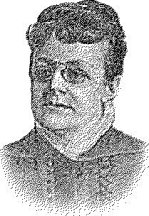
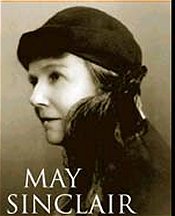
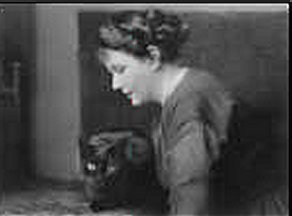
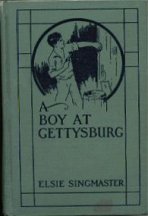
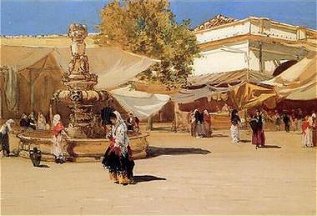
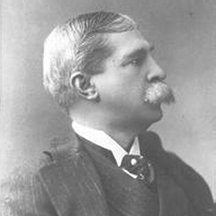 F. Hopkinson
Smith (1838-1915):
F. Hopkinson
Smith (1838-1915): 